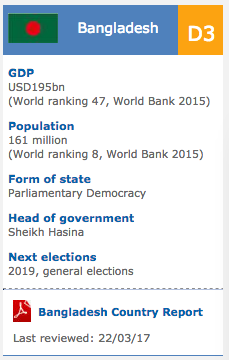Gabon: Gabon Agriculture Profile
2012/02/05

A late onset of seasonal rains delays the start of the main season maize crop planting
Harvesting of cassava, the principal staple in the country, is currently underway. Satellite-based information and analysis indicate that crop growing conditions have been generally favourable.
By contrast, the planting of the main 2014 maize crop, normally completed in October, have been affected in parts following delayed onset of rains during the first and second dekads of October. However, abundant rainfall in the third dekad of October reduced moisture deficits and improved vegetation conditions.
Earlier in the year, the second season maize crop, planted from February, was harvested in June-July. According to satellite imagery analysis, crops benefited from adequate rainfall throughout the growing period.
Average import requirement levels forecast in 2015
Agriculture contributes only about 8 percent to GDP, reflecting the predominance of the petroleum industry. The main food crops grown in the country are cassava and plantain, together with small amounts of maize (on average, approximately 33 000 tonnes per annum). Gabon imports the bulk of its cereal requirement through commercial channels, with cereal imports accounting for about 80 percent of the total consumption requirement.
In the 2015 marketing year (January/December), the cereal import requirement, mainly wheat and rice, is forecast at around 177 000 tonnes, similar to the previous year.
Prices of wheat increasing in 2014
Prices of imported wheat, the most important staple, are on the increase in the capital Libreville since January 2014, following the removal of price control measures. Wheat prices, at CFA francs 1 331 per kg in August 2014, increased by 37 percent between January and August and were 34 percent higher than 12 months earlier. A series of strikes of customs workers at Owendo port, which serves the capital and is the main throughway for imports, exerted additional pressure on prices and contributed to the marked volatility recorded in recent months.
Similarly, prices of rice in 2014 were more volatile than in recent years. However, in August 2014, at CFA francs 572 per kg , prices were around the same levels of 12 months earlier.
According to the IMF, the average inflation rate, which declined from 2.7 percent in 2012 to 0.5 percent in 2013, is forecast to increase again to 4.7 percent in 2014, due to increasing food prices and the high share of Government spending on the public sector payroll.
In the last several years, rates of inflation were highly volatile, varying from the low levels of -1.4 percent and -1 percent in 2006 and 2007 to about 5 percent in 2008, then declining to 1.9 percent in 2009, 1.5 percent in 2010 and 1.3 percent in 2011.


- Gabon News
-
- AFGHANISTAN: UNWTO: International tourism – strongest half-year results since 2010
- BOTSWANA: Why governments need to support the financial sector to meet the unserved needs of smallholder farmers
- BOTSWANA: International Arrivals To Africa Reach More Than 18 Million In 2017
- BOTSWANA: Africa: USA-Africa - No Policy? Bad Policy? or Both?
- BOTSWANA: Africa: U.S. State Department To Get Experienced Diplomat in Key Africa Post
- BOTSWANA: Africa’s economic growth in 2016 was driven by East Africa
- Trending Articles
-
- EUROPE: Ball Corporation Debuts Three New Aluminium Beverage Can Sizes
- ZAMBIA: Zambia insists on fish import restriction despite deficit
- ISRAEL: Netanyahu to pioneer new diplomatic grounds in Latin America
- CHINA: Xi Jinping opens BRICS Summit in Xiamen, asks members to shelve differences
- SOUTH AFRICA: Nigeria and South Africa emerge from recession
- WORLD: How fair is our food? Big companies take reins on sourcing schemes







